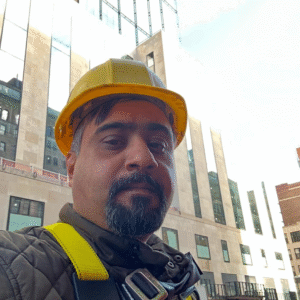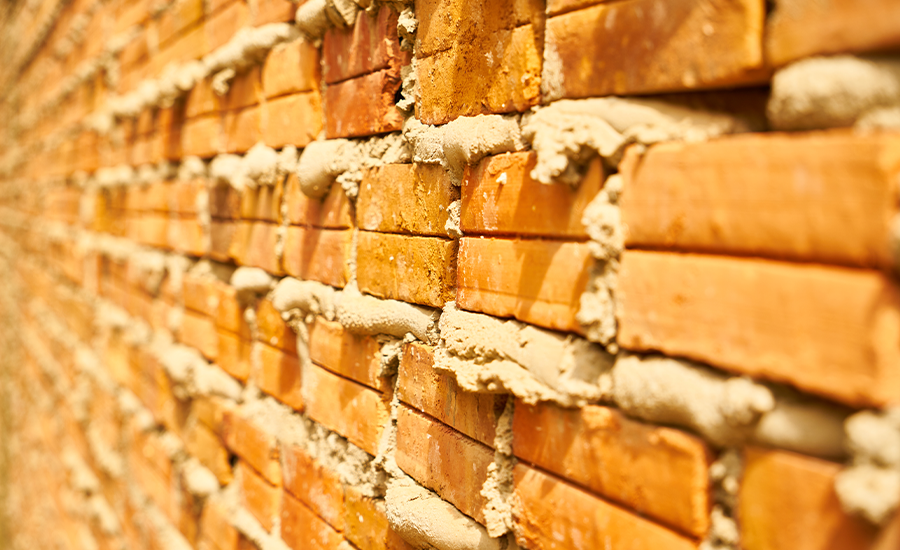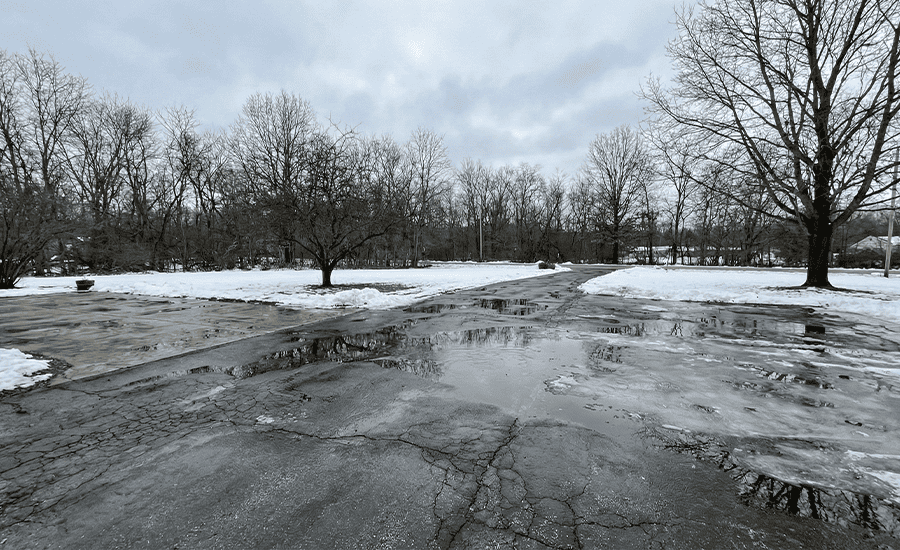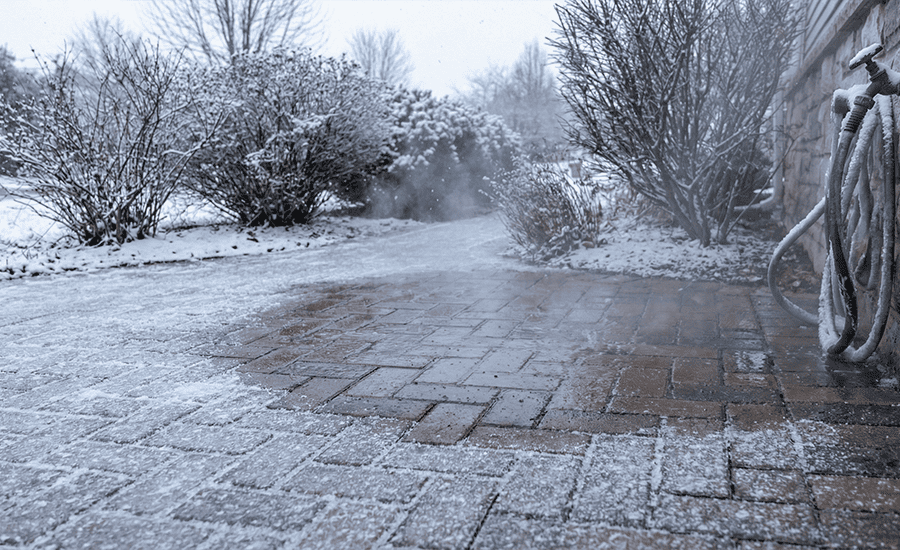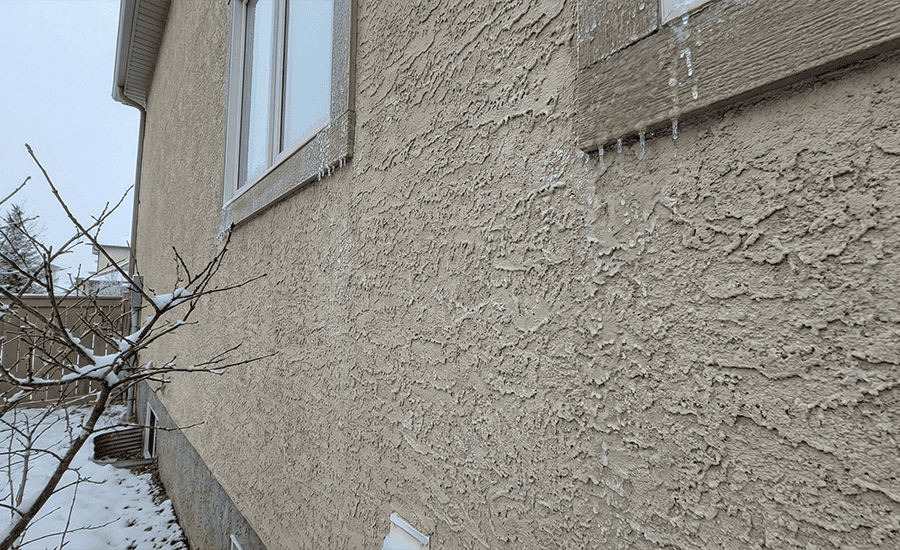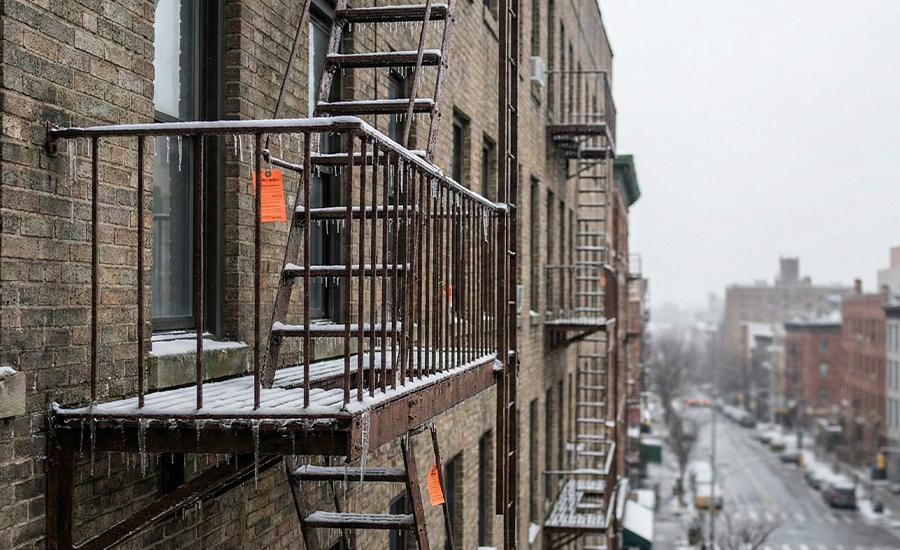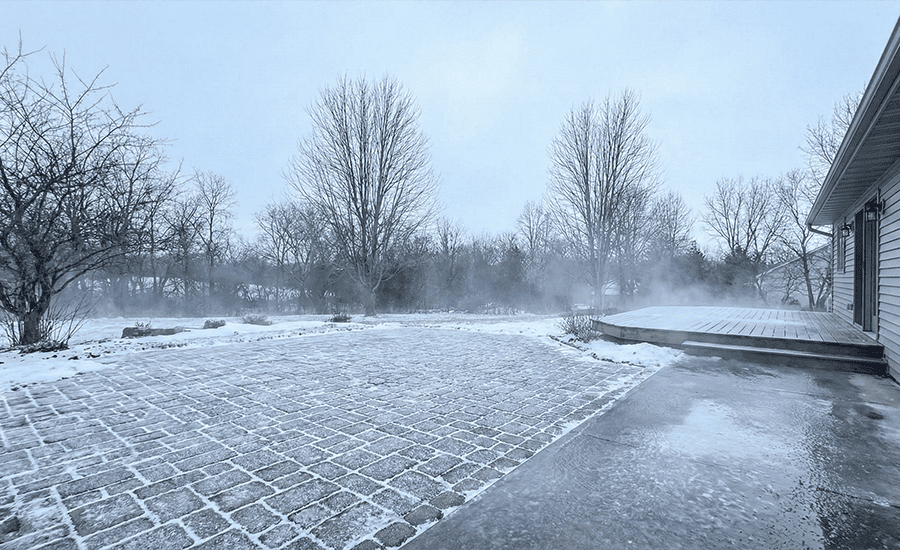Struck pointing is a widely used masonry technique that enhances both the durability and appearance of walls in construction. It involves creating angled mortar joints with a smooth finish, ensuring effective water drainage while protecting the structure from weathering and internal damage.
This method, as a type of brick pointing, not only adds to the structural integrity but also provides an aesthetically pleasing look with neat, uniform lines. Although it requires precision, skill, and favorable conditions, its long-term benefits—such as weather resistance, low maintenance, and versatility—make it a popular choice for modern and historical buildings alike.
What Is Struck Pointing?
Struck Pointing is a process used in construction as well as in masonry in the construction of walls where it brings the final joint between the bricks, stones or the blocks together. It is the process of putting the tile back into position and sharpening the mortar from joints to get a neat and smooth finish.
This method is effective in modifying the appearance of the structure as well as increasing the firmness by eliminating chances of water seepage.
Key Features of Struck Pointing
- Angled Finish: The mortar is struck at a slight angle, with the top edge recessed more than the bottom. This sloping design allows water to run off quickly, preventing moisture from seeping into the joints.
- Smooth Texture: The joints are smoothed for a polished, professional look.
- Durability: Properly Proper compressing the mortar strengthens the joint, making it more resistant to weathering.
How Does Struck Pointing Work?
Struck pointing is traditionally used in the construction industry, and the practice has been advanced in the current construction practices where there are requirements of external weathering. With proper and careful utilization as well as proper execution, it provides a durable, utilitarian, and aesthetically appealing covering.
Preparation of the Joint
Cleaning the Joint: Old or loose mortar in the joints is cleared by using tools such as chisel, raking bar or wire brush. This results in leaving room for the fresh mortar to run through in return creating a better bonding point.
Depth Uniformity: The joints are made plain to cut depth for which normally ranges from 10mm-20mm based on the sizes of the bricks or stones. Evenness is achieved when applying the gel, the smooth finish helps inexpression.
Dust Removal: Mortar joints are all washed off free from any dust and debris that lowers the strength of the new mortar.
Mixing Mortar
Mortar Preparation: Mortar used freshly and it is made from sand, cement and water in prescribed ratio depending on requirement. It should be controllable, flexible enough to achieve a consistent spread but firm at the same time that it can set once applied.
Color Matching: Where undertaking repairs on existing masonry, effort is made to ensure that the colour of the mortar to be used will match the existing ones.
Application of Mortar
Filling the Joint: The trowel is used to press fresh mortar into the joint to the right compactness. Failure to completely fill the winged end of the joint with mortar results in formation voids which when occurred leads to occurrence of water.
Excess Mortar Removal: When excess material comes out of the joint it is wiped clean otherwise the adjacent area becomes a mess.
Striking the Joint
Angled Finish: Mortar joint is formed by using a pointing tool or trowel. It is intended that the upper surface of the joint is slightly cut in a deeper plane than the lower one, thus making a tilt. As it is seen in this slope, rain water can easily drain off and no accumulation is made on this joint.
Smoothing: It was in this step that the surface is shaved with the tool in order to get the best consistent and sharp line across the entire surface. Special precautions are made to ensure no gloss is wiped off the neat mortar which has been applied on the joint.
Curing the Mortar
Moisture Control: It’s a practice to cover it [mortar] with a wet towel in a bid to keep it moist, especially if it is hot or dry outside, and then lightly spray some water on it. This avoids cracks and enhances the look and stability of the joint.
Set Time: The fireplace mortar cures over several days during which it gains full strength and is fully weather resistant as well.
Benefits Of Struck Pointing
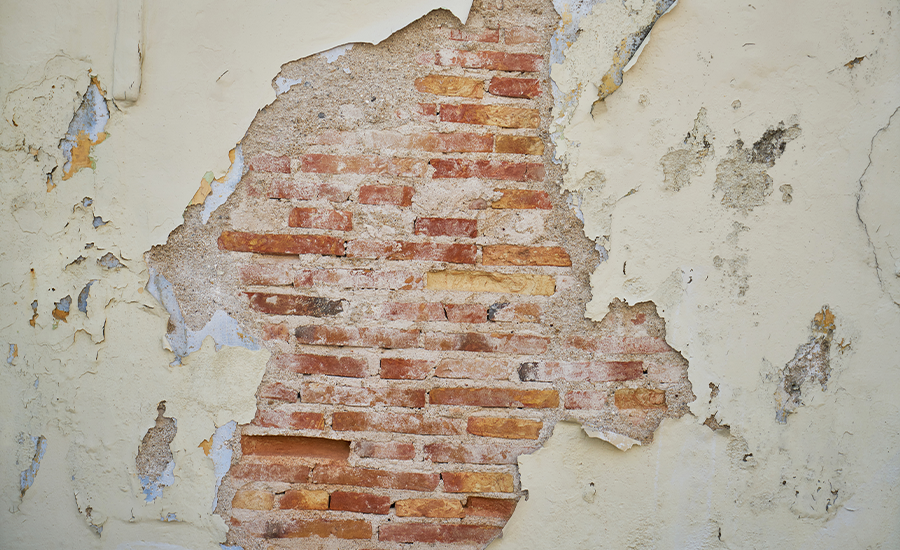
Struck pointing is a widely used masonry technique that provides both practical and aesthetic advantages. Here’s a detailed look at the benefits:
Enhanced Weather Resistance
- The sloping finish of struck pointing allows water to drain and ensures that water will not pool on joints.
- Due to its low permeability, it also eliminates risks associated with frost on the soil, dampness, and soil erosion in the long run.
Improved Durability
- Mortar joints must be compacted and angled correctly so they will not be easily worn out due to weather variations.
- The design enhances the bonding between the bricks or stones, increasing the strength of the wall.
Aesthetic Appeal
- Pointing with strikers produces smooth, straight trenches, making the masonry look neat and professional.
- It is often possible to vary the color of the mortar to one that complements the bricks or sets off a startling contrast to them and makes the building more interesting.
Protection of structural configuration
- By keeping water away from the joints, it protects the masonry from internal cracking and degradation.
- The technique ensures the wall remains structurally sound for a longer period.
Low Maintenance
- Struck pointing is pointing in which the surface of the pointed area is made to slope, making it easier to clean the surface areas and joints because dirt and debris cannot accumulate there easily.
- They include that it has a weather-resistant structure, leading to little or no frequent repairs.
Versatility
- Struck pointing can be applied on brick, stone, or blockwork.
- It is the right material for is the right material for today’s construction and the revival of the ancient or historical edifice edifices.
Cost-Effectiveness
- Although it requires skill, the longevity and reduced maintenance needs of struck pointing make it a cost-effective solution in the long run.
- It prevents expensive repairs caused by water damage and joint deterioration.
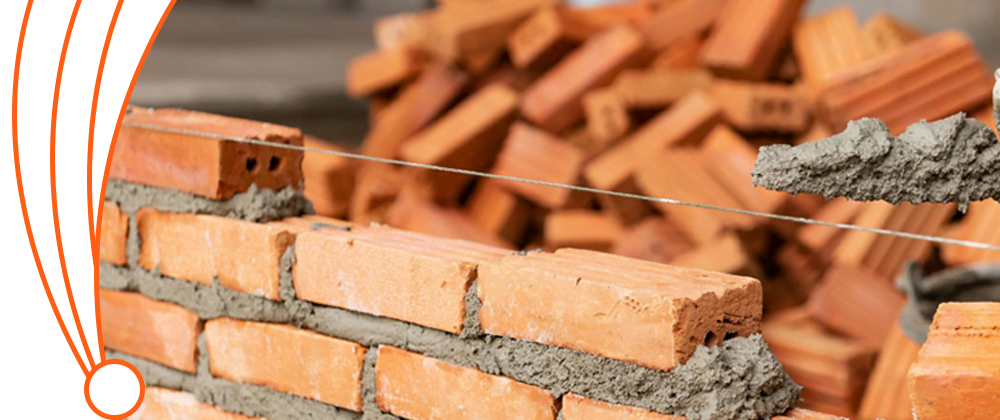
What Are The Challenges of Struck Pointing?
Struck pointing has many benefits, but like any construction method, it comes with a few challenges of struck pointing. Whether you’re a contractor or property owner, understanding these challenges can help ensure better planning and execution. Below are the key issues to watch for:
Precision and Skill Required
- Struck pointing demands high levels of precision to achieve the correct angle and a uniform finish.
- If the technique is not applied through training or expertise, it leads to joints with non-uniformity that is unattractive and may lead to problems such as early wear with frequent use.
- Professionals dealing with masonry work require a stable hand and the right experience to use particular tools to complete this process in the right manner.
Time-Consuming Process
- It however takes longer and requires more human input than the other basic joint finishes.
- The process of putting each piece together, the innovation, and the sanding of the joint need a lot of precision, and it takes time.
Weather Dependency
- Struck pointing is highly dependent on favorable weather conditions.
- Extreme heat can cause the mortar to dry too quickly, leading to cracks, while cold or wet conditions can weaken the bond and delay curing.
- Planning the process around the weather can be challenging, especially for large-scale projects.
Risk of Mortar Shrinkage
- If the mortar mix is not prepared with the correct ratio of cement, sand, and water, it may shrink as it cures.
- Shrinkage can cause cracks in the joints, reducing the effectiveness of the weatherproofing and structural strength.
Maintenance of Consistency
- Maintaining a uniform slope and depth across the joint planes is not easy especially for large walls or in corners and edges.
- This can lead to a general mismatch of the finished structures and perhaps the need to redo some areas to rectify these disparities.
Higher Costs
- Due to the skill level and time required, struck pointing tends to be more expensive than other pointing techniques.
- Hiring experienced professionals and ensuring high-quality materials add to the overall project cost.
Risk of Water Accumulation if Done Incorrectly
- If the slope of the mortar is not executed correctly, it can lead to water pooling rather than running off, defeating the purpose of the technique.
- Poorly applied struck pointing can accelerate weather damage instead of preventing it.
Sardar Restoration Renowned For Struck Pointing In Masonry
At Sardar Restoration Corp, we take pride in offering a comprehensive range of masonry services, specializing in brick pointing, tuck pointing, repointing, struck pointing, and other advanced pointing techniques. We pride ourselves in offering you the best of struck-pointing services that adds value to your masonry work added advantage of durability, weather and elegance. Our highly professional staff guarantees perfect dosage of color and its lasting effect due to years of experience. We strictly follow the Rules of Local Law 11. We ensure that we only use the best quality material and methods on the outside of your building to prevent water and moisture damage while still preserving the architectural design of the structure.
Whether restoring an old structure or building a new one, trust us for flawless struck pointing that stands the test of time. Contact us today for expert masonry solutions!
Wherever you are, our services are available to meet your local needs. Contact us today at (+1) 917-355-8556 or sardarrestoration@gmail.com, or visit us at 2770 Fish Ave, Bronx, NY 10469, United States. Let us bring excellence to your next project!
FAQs
Is Struck Pointing More Durable Than Other Types of Pointing?
Yes, struck pointing is more durable than many other types due to its sloping design, which effectively prevents water infiltration and reduces weathering damage. This durability makes it a preferred choice for long-lasting masonry.
How Does Struck Pointing Affect Water Drainage?
Struck pointing features a sloping finish that directs water away from the joints, preventing it from seeping into the masonry. As explained in our guide on Struck Pointing Water Drainage, this design minimizes water-related issues like frost damage and erosion.
Why Is Struck Pointing Popular for Older Buildings?
Struck pointing is often chosen for older buildings because it enhances weather resistance while maintaining the traditional appearance of the structure. Its clean, angled lines complement historical masonry designs, which is why struck pointing for older buildings remains a preferred restoration technique.
What Are the 5 Weather Considerations for Struck Pointing?
- Avoid application during heavy rain to prevent mortar washout.
- Work in mild temperatures to ensure proper curing.
- Protect mortar from drying too fast in hot weather.
- Avoid freezing conditions during application.
- Ensure a stable, dry environment for maximum durability.


